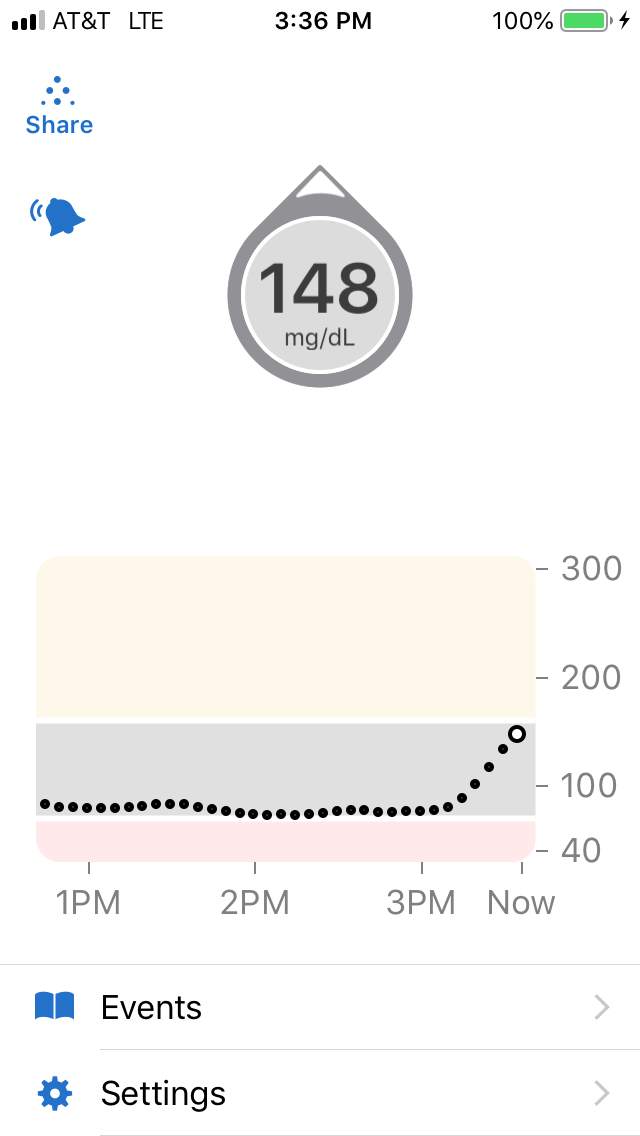Somewhere on a road trip in New Jersey my friend and I stopped at a diner for lunch. Honestly, I haven’t eaten a muffin, scone, bagel…in years, and years. But for some insane reason my mind said, “Oh, let’s have a corn muffin today.” A treat. Oops, without knowing it I was experiencing “diabetes selective memory.”

When we sat down at the diner for lunch it was 2:20 PM and my blood sugar was 74. An hour later, after taking what I thought would cover the amount of the muffin I ate – half the muffin – I saw this.

Yikes, I took more insulin. A short while later I saw this…yikes, I took more insulin…

The high point, no pun intended was 202. Then it began to come down. Luckily I never crashed. It settled at 112 at 6 PM.

This experience was a stunning display of a remarkable head space we fall into that my friend termed, “diabetes selective memory.” Who was I kidding, two units of insulin for that fluffy yellow, spongy carb bomb called a corn muffin? I knew better, somewhere in my global memory.
When my friend came up with the term she’d been denying the fact that eating lots of carbs and fat shortly before bed raised her blood sugar to almost 300 at 3 am even though when she went to sleep her blood sugar was perfect.
She knew better. She saw the rise night after night but somehow wiped it completely from her memory. I too chose to not remember what a muffin will do to my blood sugar. Yes, it had been a long time since I ate one, but still, this was a clear case of DSM.
Was it worth it? Not so much. Maybe if the muffin had been more delicious I could say yes. But it reminded me that if I have one again in another ten years, I’ll bring two insulin pens to make sure I can cover the rise. 😉


